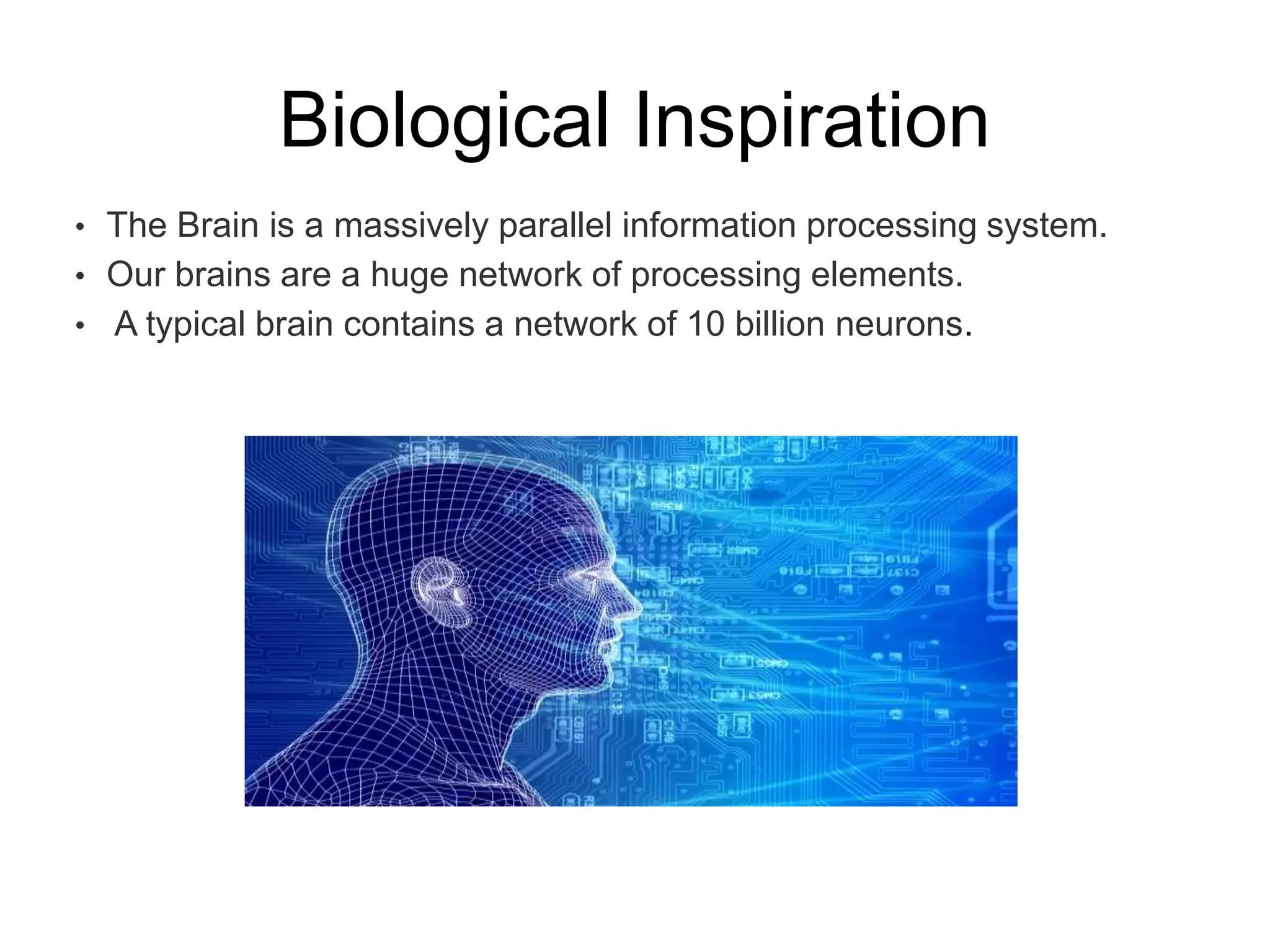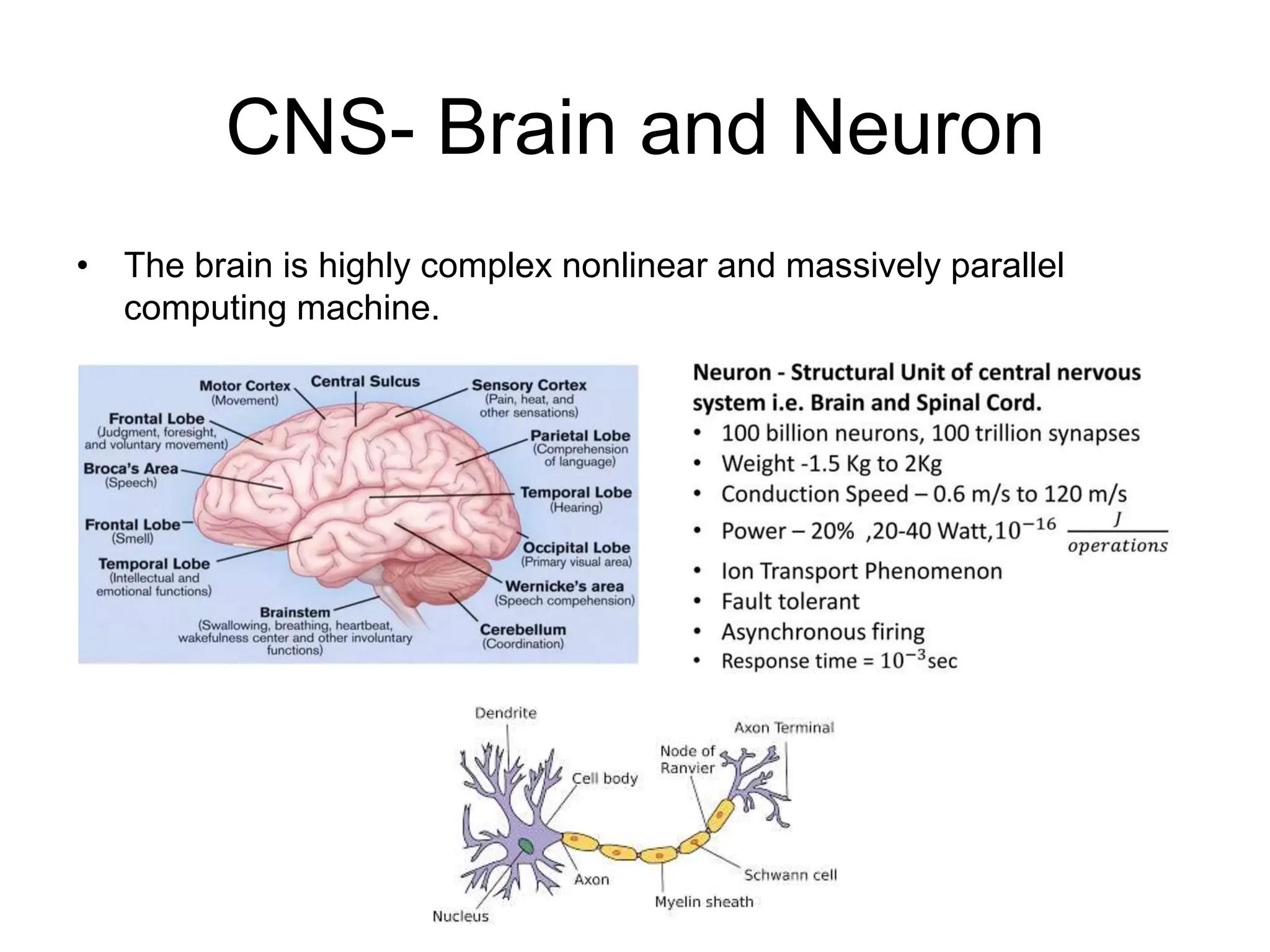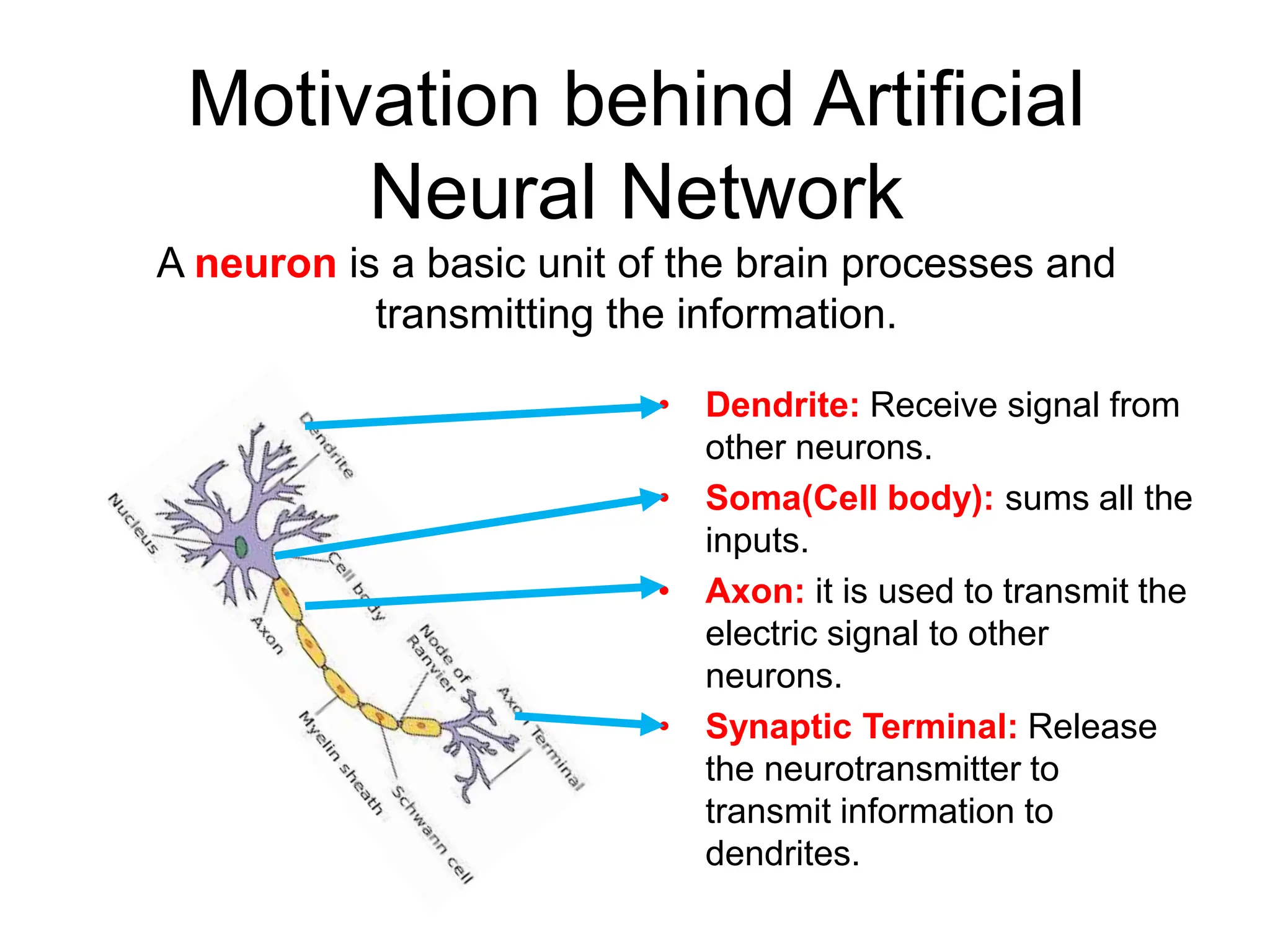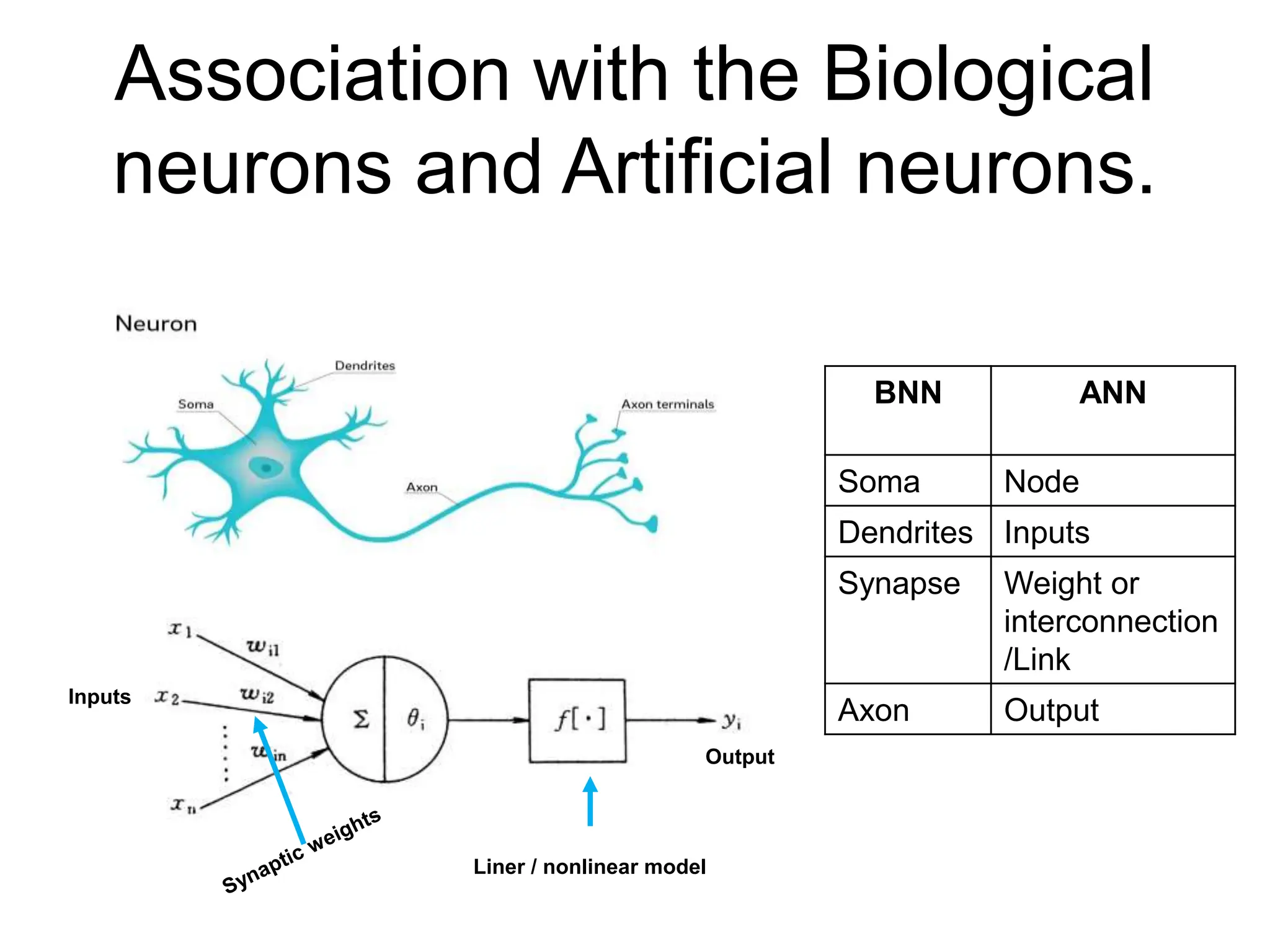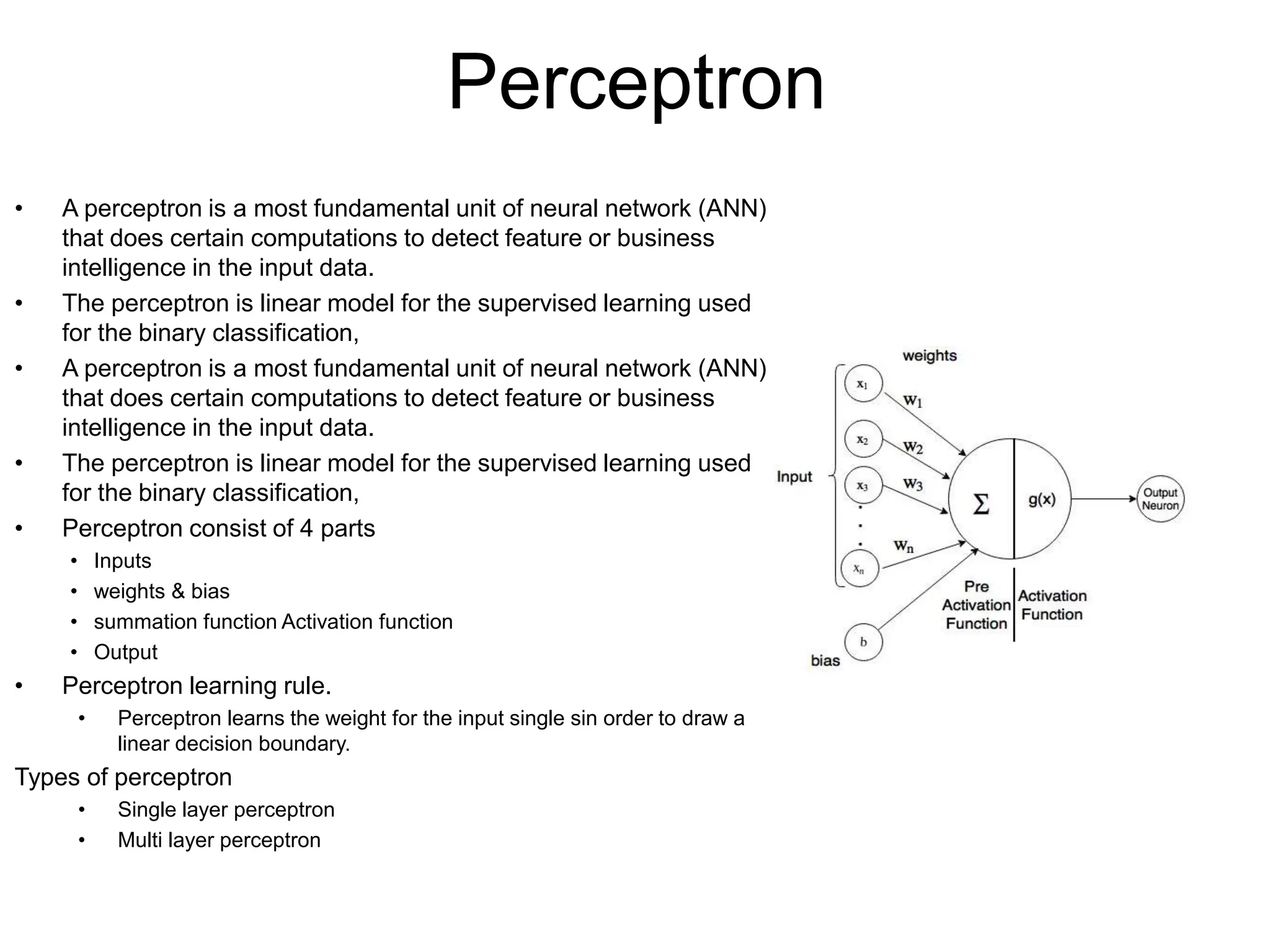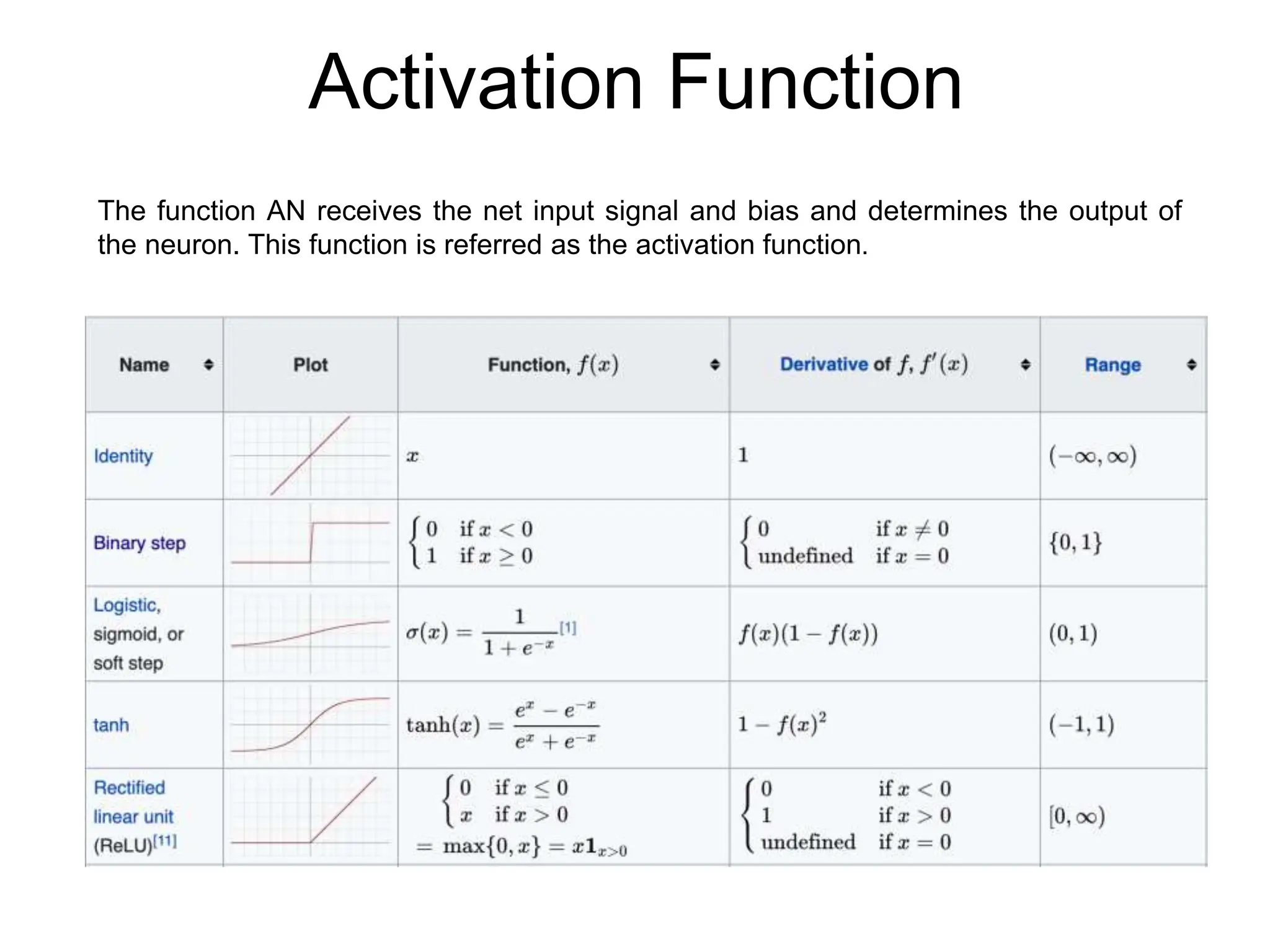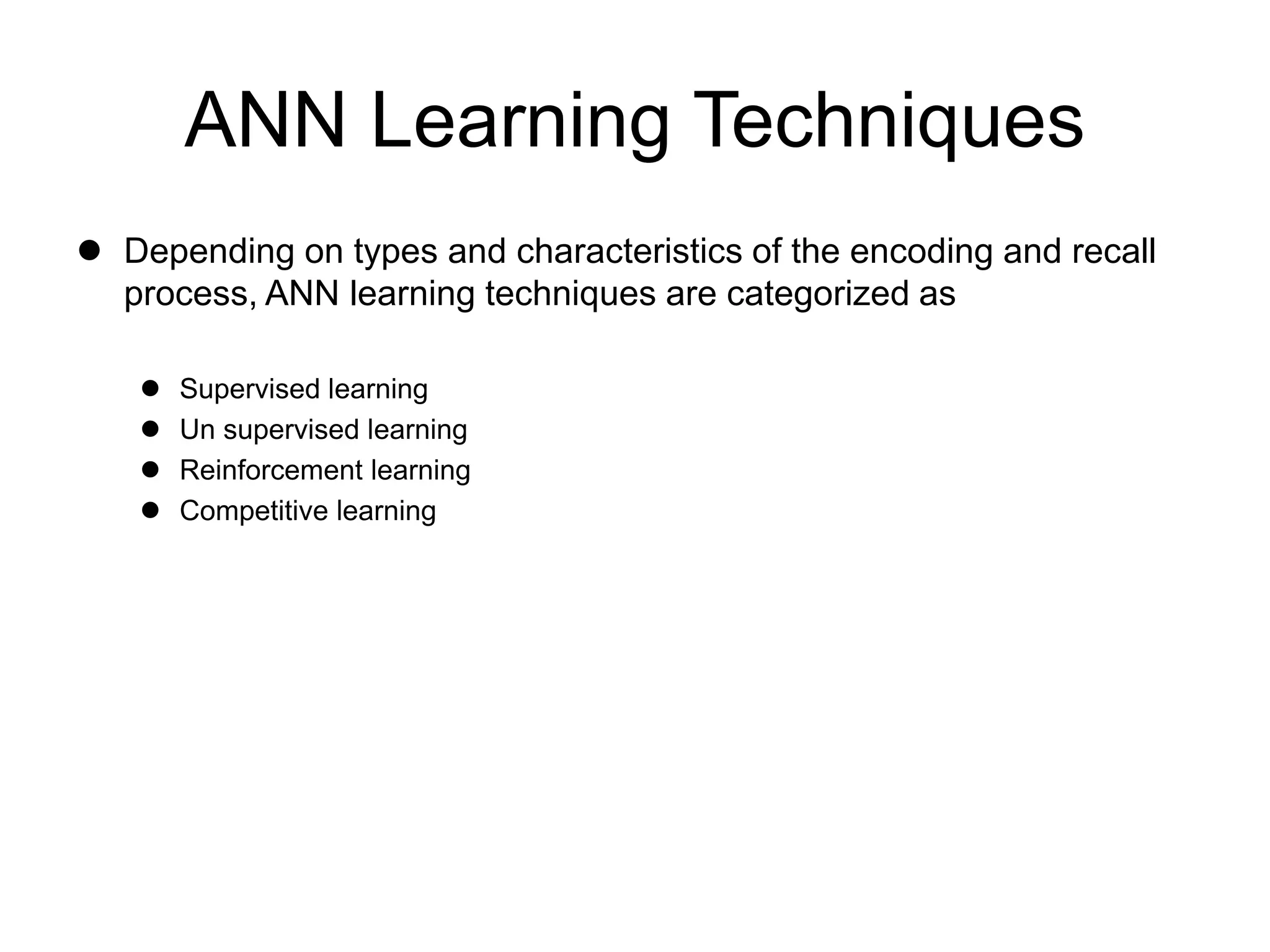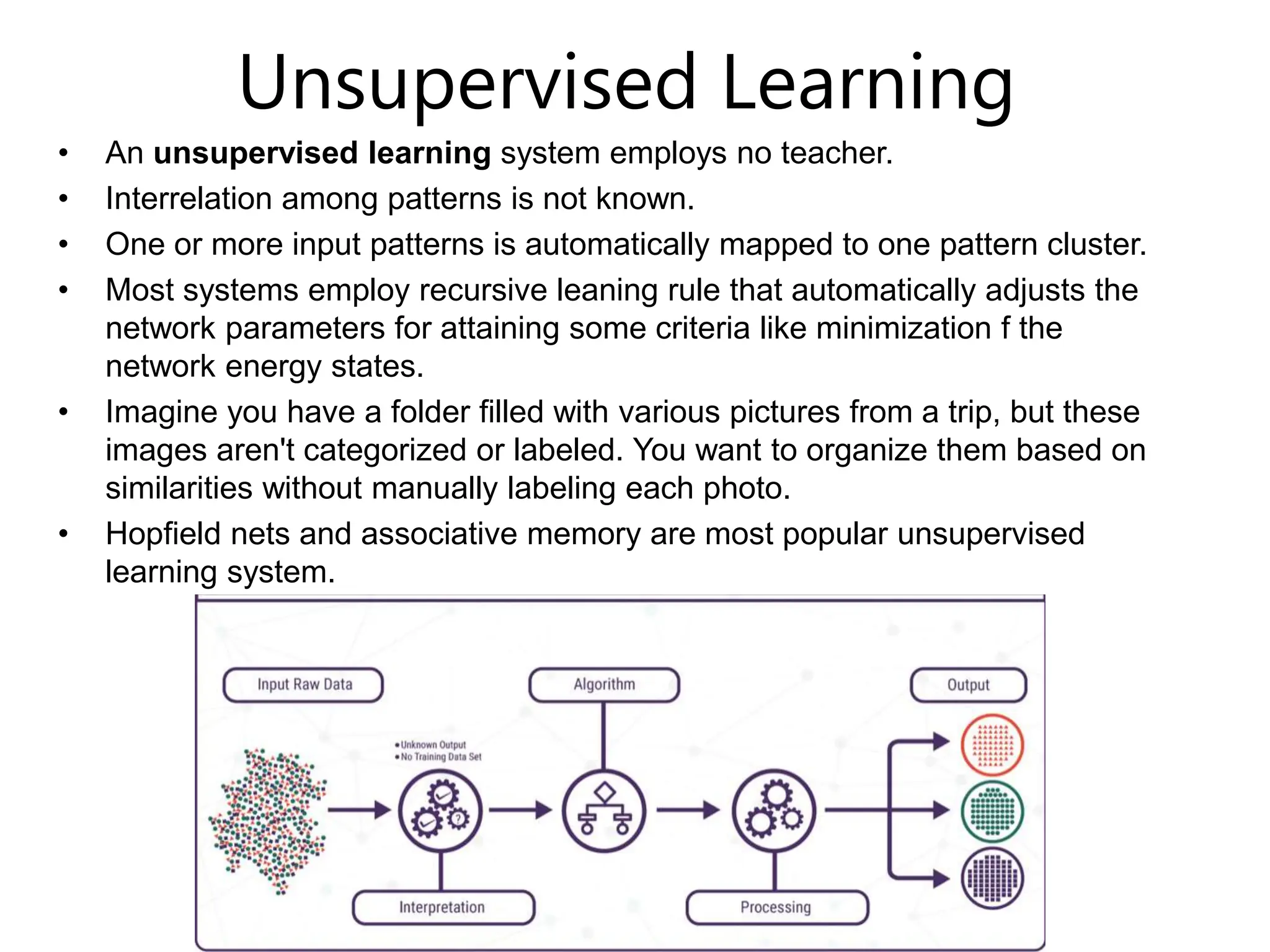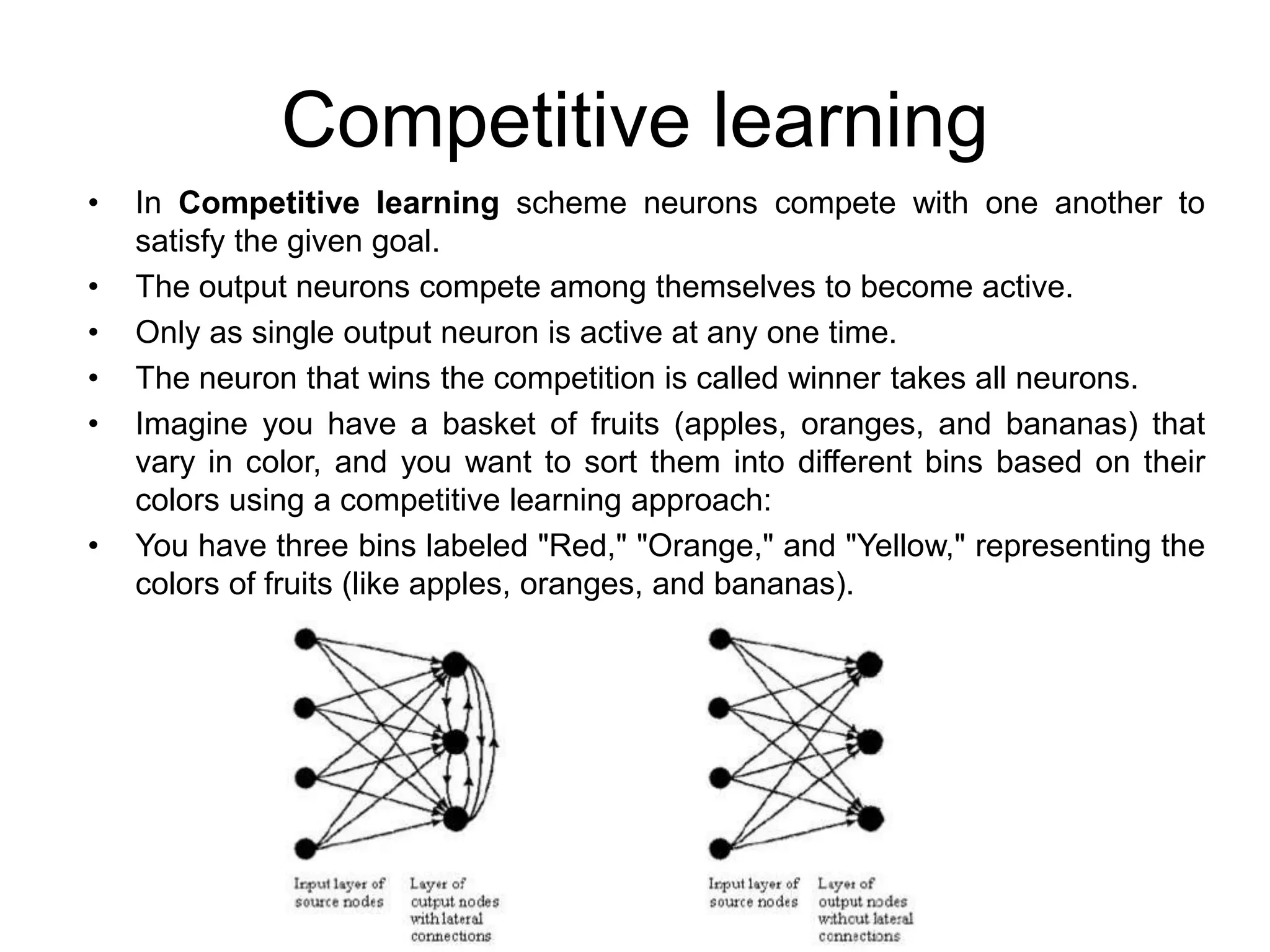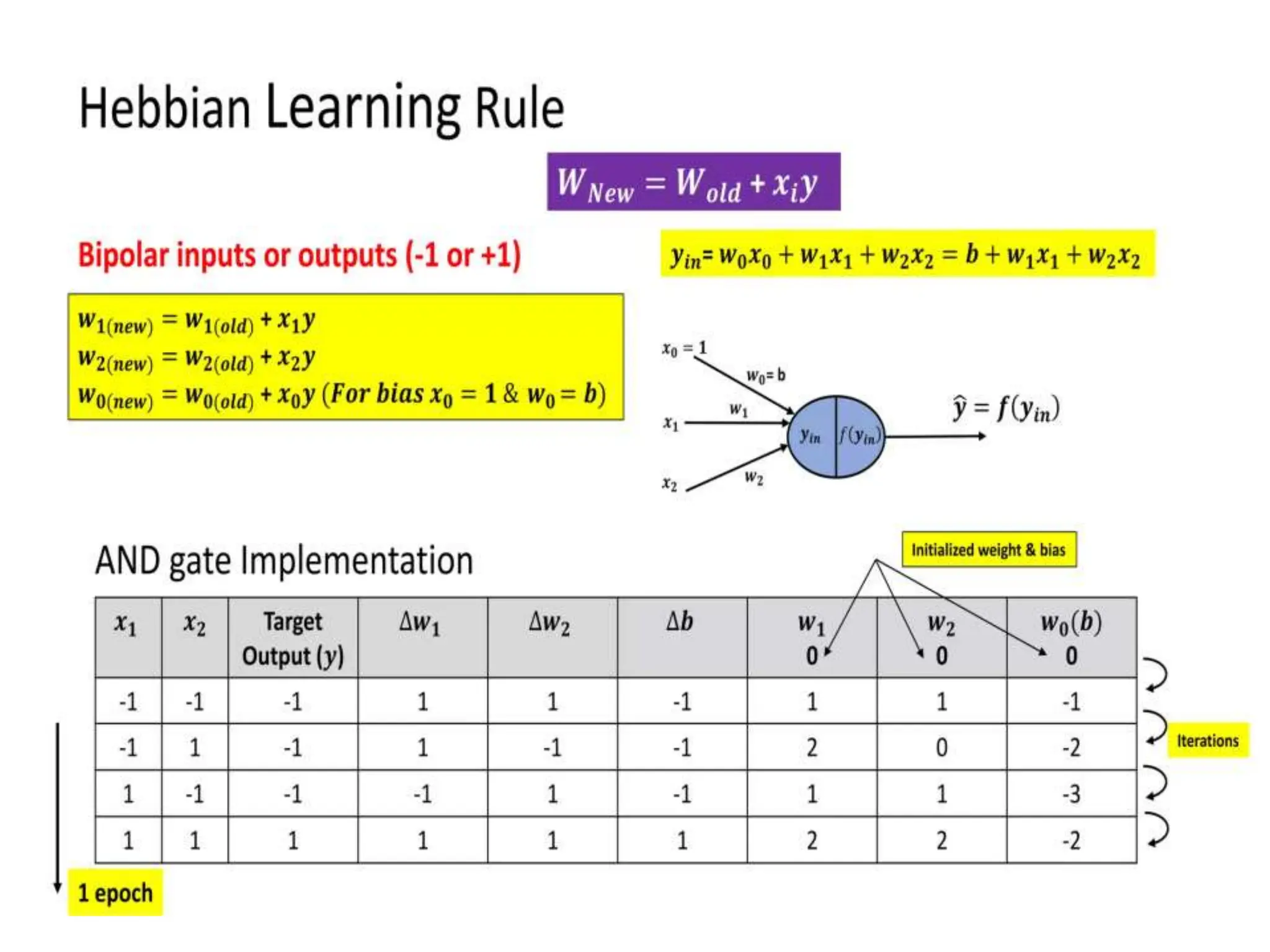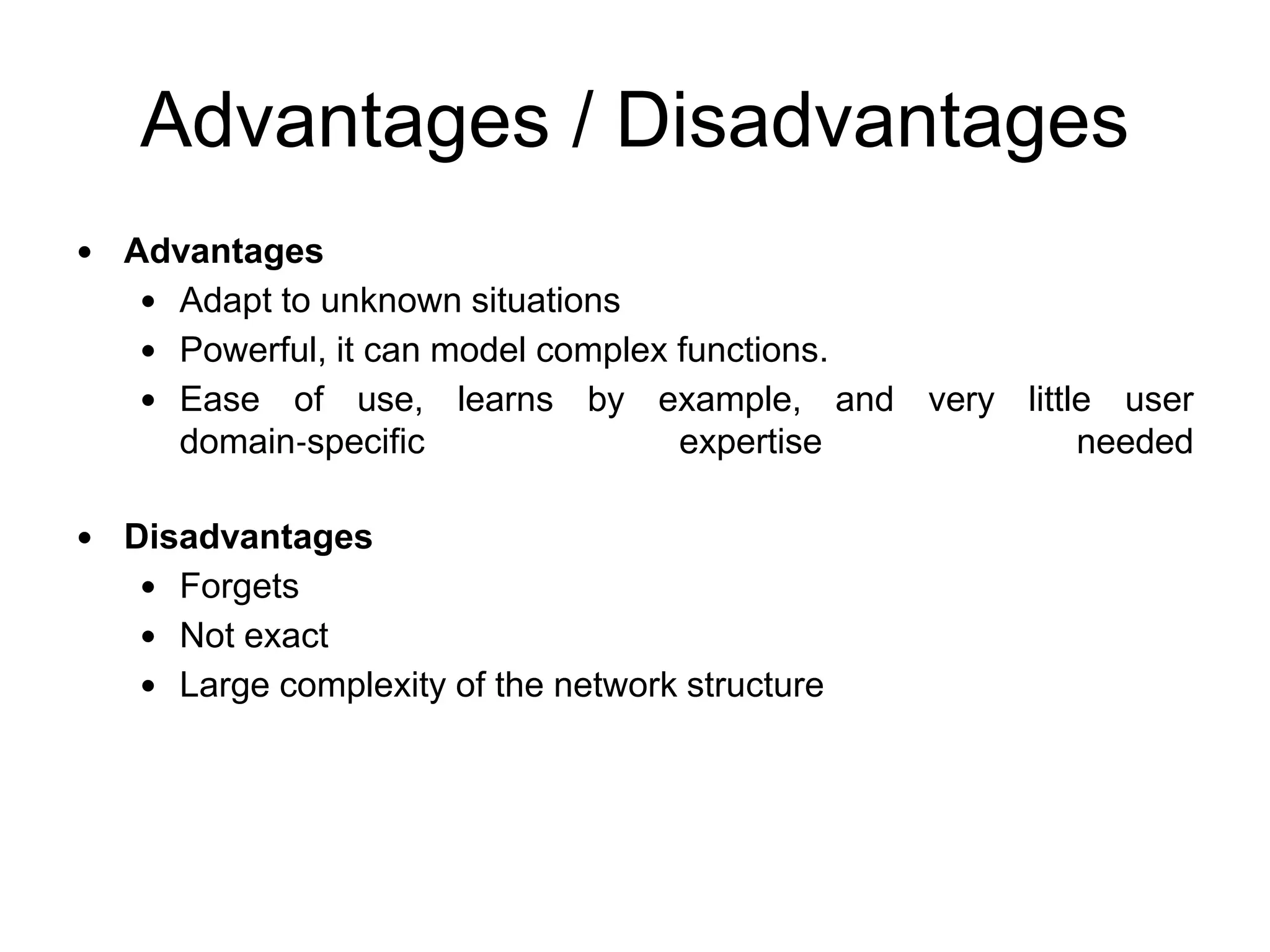This document discusses artificial neural networks (ANN). It describes ANN as computational models inspired by biological neural networks in the brain. ANN consist of interconnected nodes that process information, learn from data, and make predictions by adjusting connection weights. The document outlines different types of ANN architectures including single layer, feedforward, and recurrent networks. It also covers ANN learning techniques such as supervised, unsupervised, reinforcement, and competitive learning.


